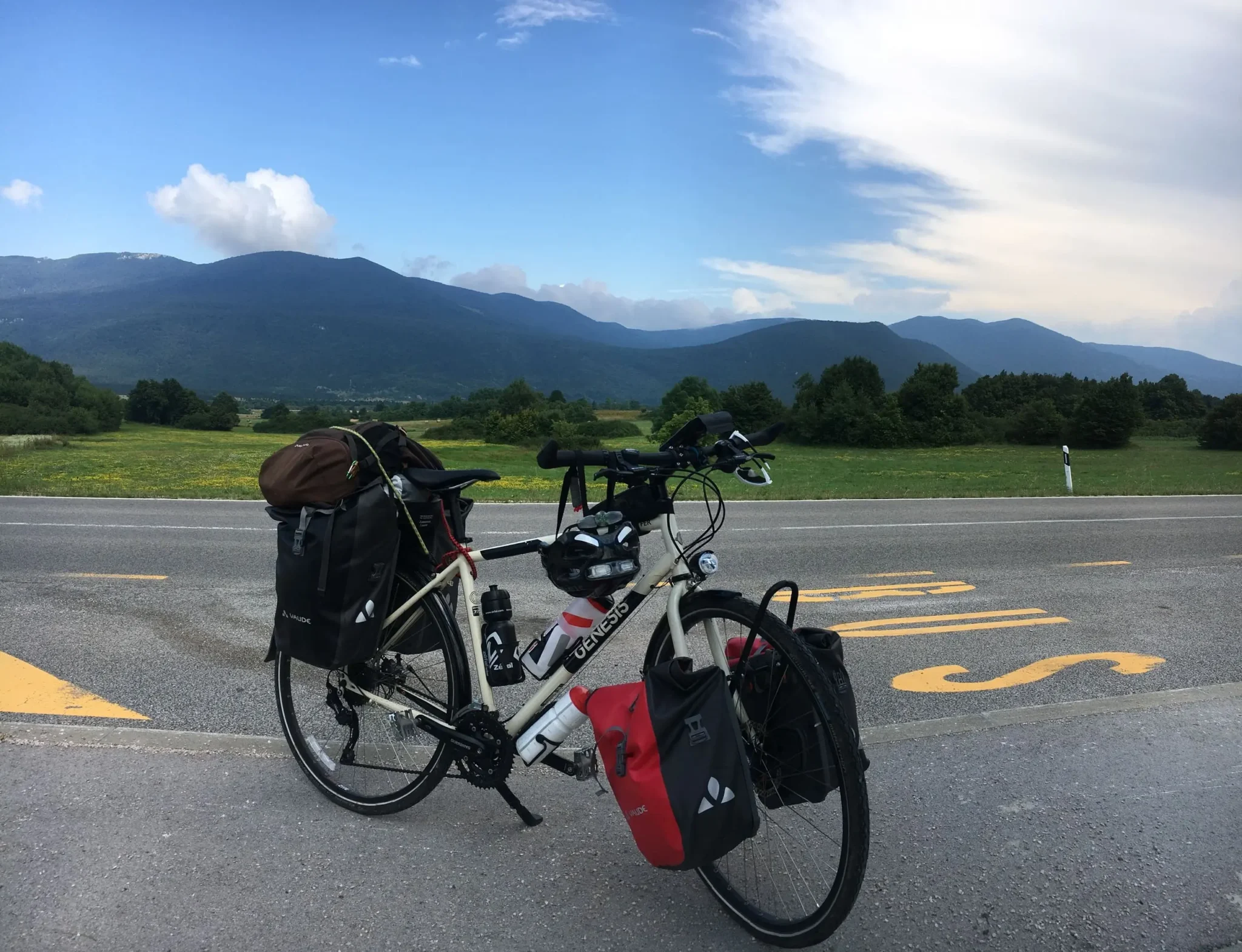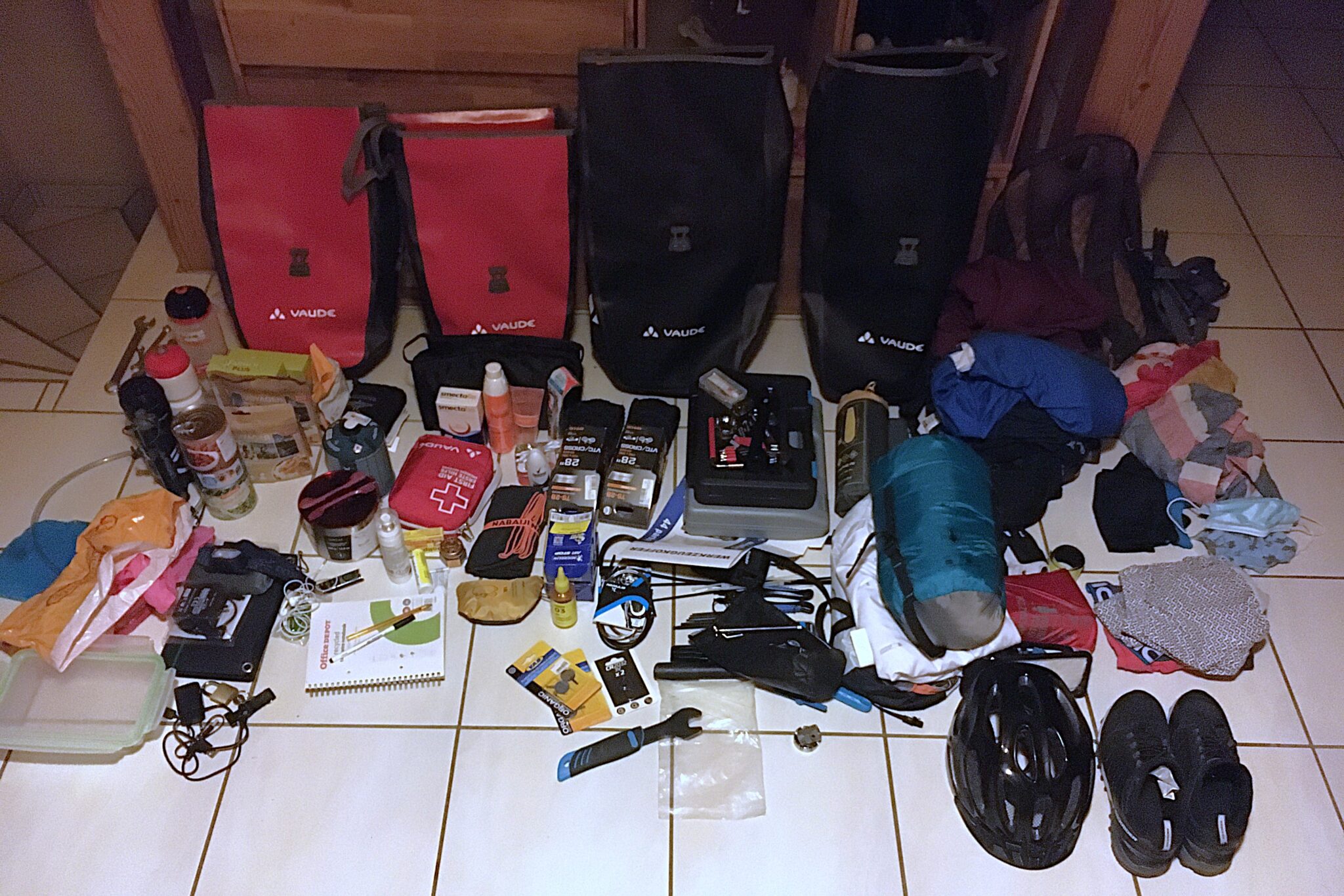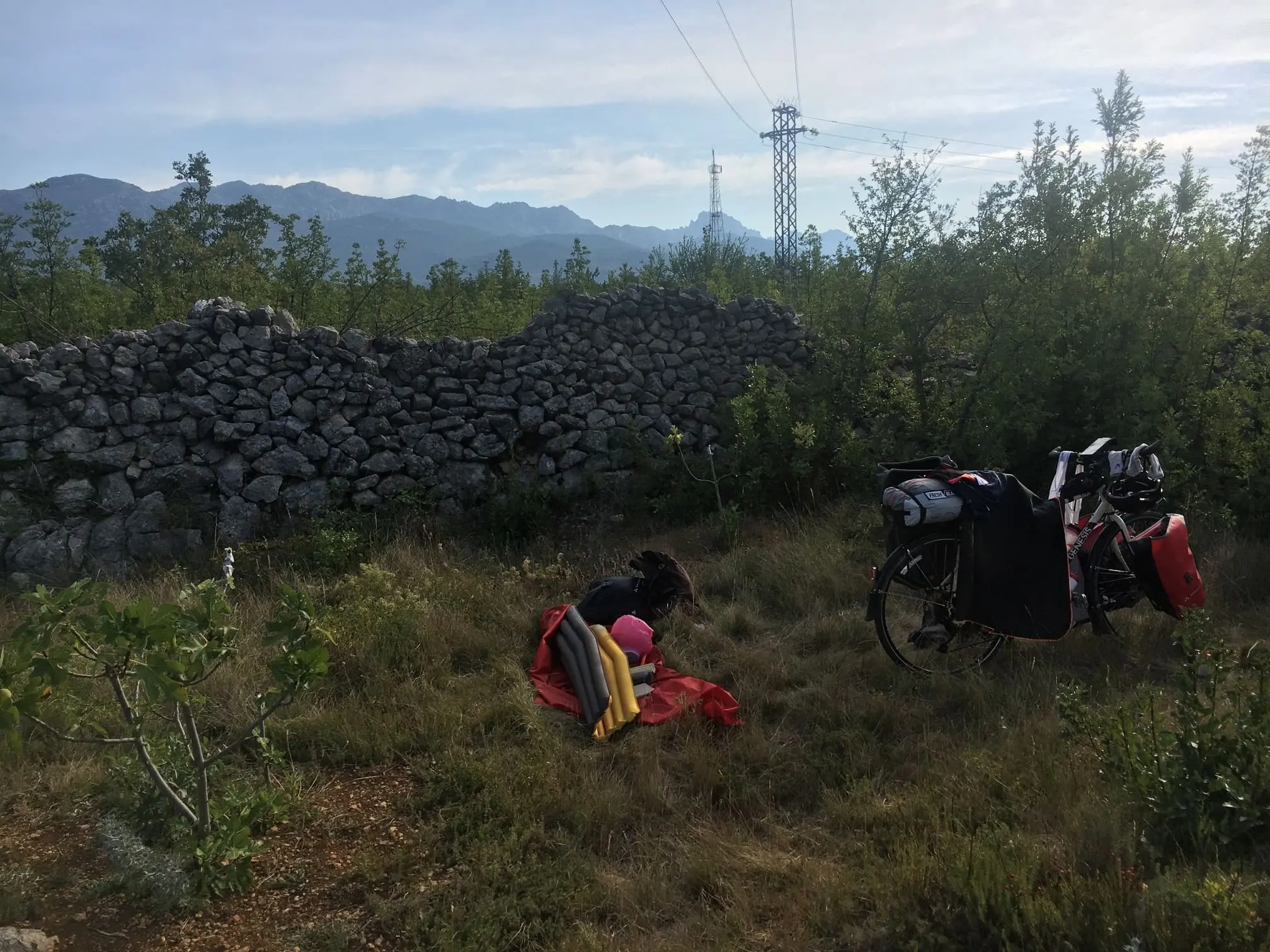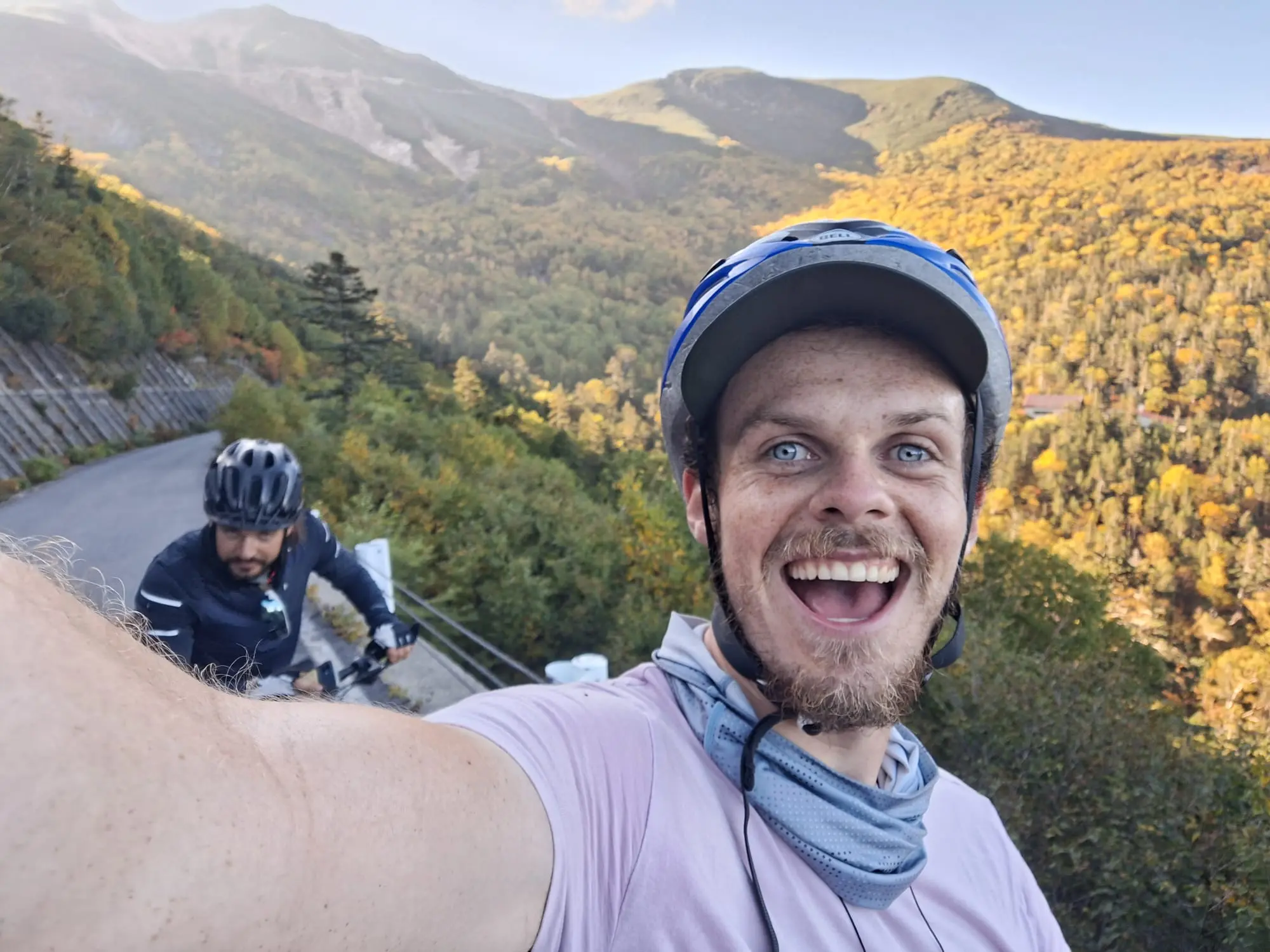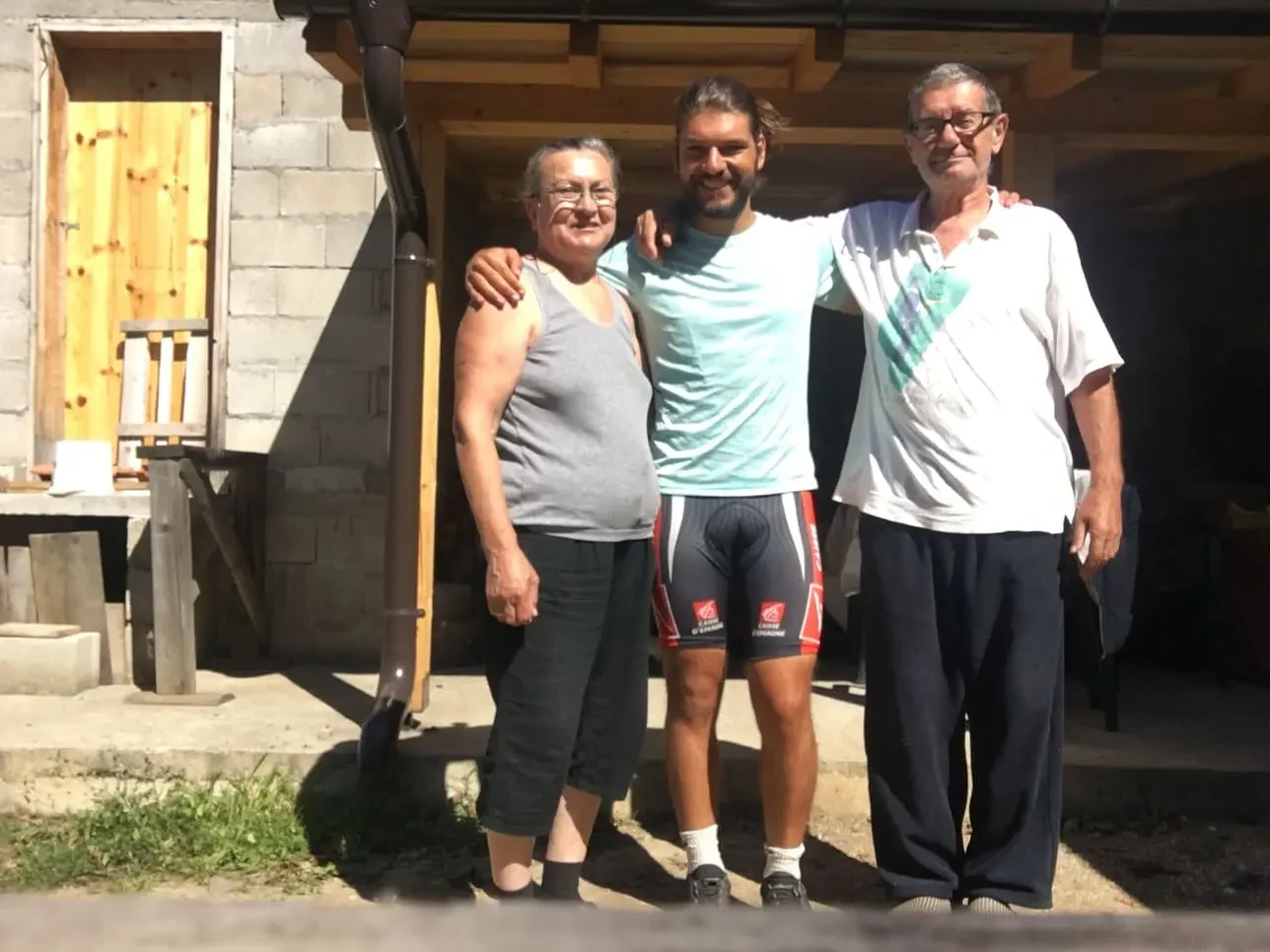Preparing for a bike trip is essential to ensure a smooth and enjoyable experience. Whether it’s choosing the right gear, getting physically ready, or building mental strength, each aspect matters. This guide is designed to help you structure that preparation.
The following decisions will also depend on how you’ve defined your trip beforehand (see article on defining your trip).
The key principle is simple: focus on the essentials—you can adapt as you go during your trip(s) and through experience.
Before diving into the different sections, I’d like to share a summary of my experience during my first round of preparation. To gain beginner-level knowledge, I recommend looking for reliable sources of information through blogs, YouTube videos, or even reaching out to people you know. This will help you get familiar with as many terms, pieces of equipment, and useful practices as possible for this kind of trip. This research will also help you form your own opinion and decide what level of effort you’re willing to put into the journey (which also helps with defining your trip). Then, jot down all the ideas you find useful on paper or in a chart. Time and reflection throughout the preparation process will help refine those ideas smoothly and worry free.
1. Gear Preparation: Choosing and Organizing Your Equipment
My material for my first trips can be found in the following post : Bicycle Travelling Material
1.1 The Bike and Its Components
The choice of bike depends on the type of terrain you plan to ride and your personal preferences regarding comfort and durability.
- Bike type
If you’re mainly riding on paved roads, an aluminum frame might do the job. For mixed terrain or more remote areas, a steel frame might be preferable due to its flexibility and ease of repair (though aluminum has improved in comfort and reparability too). - Wheel size
Larger wheels (28 inches or more) allow for more efficient pedaling over long distances but reduce off-road maneuverability. Also consider tire type depending on terrain (road, gravel, off-road) and whether your bike can accommodate those wheels.
For a more detailed look into bike gear, I suggest checking out more specialized websites or visiting a bike shop—experts can guide you better.
As for me, I went to Cyclable Strasbourg where I quickly found a model that suited me. Covid had kept me stuck in Germany, so I could only start shopping for a bike in France one month before my first trip. I don’t recommend buying your travel companion with such a short window to get used to it, although it’s doable.
1.2 Essential Accessories and Spare Equipment
Panniers and bags
Choose waterproof panniers with good compartmentalization. Keep in mind the maximum recommended weight (aim to stay under 40 kg total, including water—ideally under 30 kg). Personally, I always stay between 32 and 36 kg.Brakes and spare parts
Make sure to have brake pads or discs compatible with your bike. Always carry 1–2 spare sets of vital parts (inner tubes, tire, chain links, etc.).- Tools and repair kit
- Bring the basics to maintain and repair your bike: Allen keys, pliers, wrench, puncture repair kit, and all that jazz.
- After gathering the tools, the next step is gaining a few basic skills to care for your two-wheeled friend. You don’t need to be a pro welder, but watching tutorials on how to change a tire or brake pads, or take care of your chain and cassettes, is definitely reassuring.
- I highly recommend trying out 1 or 2 of the techniques you’ve learned beforehand, to get a feel for what tools you’ll need on the road. Still, don’t hesitate to ask locals for help if you run into trouble during your trip.
Body care
Knowing how to fix yourself is also crucial. Learn to prevent common aches by properly adjusting your bike, using creams, and packing basic meds. Stretching would help too—but remembering to do it is another story (me? I always forget 😄).
1.3 Clothing Suited to Climate and Comfort
Your clothing choices should match the climate along your route and ensure comfort during long days sitting on the saddle.
- Cycling shorts
Essential to avoid saddle sores. I recommend bringing 1 or 2 good-quality pairs. Note: Men’s and women’s models differ. - Other clothes
Feel free to reuse light sportswear you already own (shorts, jerseys, sneakers), or buy second-hand. Make sure your clothes are appropriate for the weather conditions of the countries you’ll pass through (hot, cold, humid, etc.).
1.4 Sleeping and Eating: Camping or Accommodation?
Planning your overnight stays and meals is another key aspect.
- Camping
If you go for camping, choose a tent large enough (it’s best to get one size bigger than the number of campers, so you can store your gear inside), or at least one with a vestibule. Options vary depending on whether you travel solo or in a group. - Cooking
If you plan to cook, bring a stove, gas canisters, and lightweight utensils. - Food and hydration
Develop some basic eating routines and learn how to manage your energy intake (snacks like protein bars, cereal, nuts, etc., and regular hydration with isotonic drinks : don’t lose your minerals).
1.5 Navigation and GPS Apps
Recommended apps
Komoot, Maps.me, Bikemap, or Strava are all popular choices. Once you’ve picked one, learn its main features to navigate with ease. Stick to it for the whole trip—if you want to switch apps, do it for your next journey.
Personally, I stick with Komoot—it works well most of the time, even if some suggested routes can be frustrating (no app is perfect).Map
A paper map always does the trick especially if you lose battery or network, and it’s a great souvenir for tracing your route at the end.
1.6 Insurance and Payment Methods
Insurance
Use a credit card that offers travel insurance, or get additional coverage for peace of mind. It’ll reduce costs in case of trouble or international withdrawals.Withdrawals / Payments
Use one or more online bank cards. Their fees are always better for both withdrawals and payments. In France/Europe, BoursoBank, Revolut, Fortuneo, or HelloBank! are solid options.
In any case, test your gear and skills in advance. That way, you won’t be caught off guard during off-the-bike activities. The goal is to ensure everything rolls smoothly.
2. Physical Preparation: Getting in Shape Before the Trip
Being in good physical condition will make your journey more enjoyable and help prevent exhaustion. You don’t need to be an athlete, but a few training rides can make a big difference.
2.1 Progressive Training Rides
- Start with short 2–3 hour rides, then gradually build up to 6–7 hour sessions. Take it easy, especially if you’re a beginner. First pretty flat trainings and then add some ascent.
- Add other cardio or strength training activities if possible. Good oxygenation, a strong back, or being able to lift 15–20 kg will always help. Especially if you shall carry your bike around some obstacles.
2.2 Multi-Day Practice Rides
Simulating the trip
Try doing two or three consecutive days of cycling—it will prepare you for the daily effort of a long trip. This helps you test your limits and get used to managing stages and overnight stays.
2.3 Adapting Your Trip to Your Level
Managing the first days
If you haven’t trained much, don’t worry. The start of your trip can serve as a warm-up period. Keep your distances short at first and increase gradually. Just know your legs and butt will hurt a bit in the beginning—but it’ll pass quickly.
3. Mental Preparation: Strengthening for Psychological Challenges
Mental readiness often makes the difference for a successful trip. Here’s how to get yourself mentally prepared.
3.1 Belief and Confidence in Your Project
The most important thing is believing in your project. Once your route is set and your research is done, trust yourself and commit to the adventure.
- Making decisions aligned with your choices
Following the advice in the article about defining your trip will help you make a plan that suits you. Once on the road, don’t fear mistakes—bike travel offers a lot of flexibility, whether in adjusting your route or dealing with surprises. Asking locals for help is always a good idea. - Staying motivated
Bike touring is a gradual challenge. It’s important to be patient and not get discouraged if the first days are tough. When low points hit, there are ways to keep things enjoyable. Stay focused on the positive future, even if weather or fatigue gets in the way. Plan rest time, and celebrate small wins—like reaching a summit, a city or some pleasant people exchanges !
3.2 Dealing with Relatives Opinions
Convincing yourself is one thing, but when you take on an unusual project like a bike trip, feedback from others can bring either stress or helpful advice.
- Managing concerns
Some people might try to steer you away from the idea out of worry—but don’t let their doubts hold you back. Use the conversation to fine-tune aspects of your trip, but don’t be overwhelmed by their fears. Show your project is well thought-out and reassure them along the way.
Personally, I only had to reassure my parents. After talking, things eased up. And after two trips, I think they trust me now. - Convincing your work environment
If you’re working, you’ll need to ask your manager for time off or unpaid leave—or even quit. Time it well and bring up the idea early to make it go smoothly.
3.3 Listening to Yourself and Staying Flexible
Bike touring requires lots of adaptability, both physically and mentally. Listen to yourself, know your limits, and adjust your trip accordingly. You’ll learn as you go—just be aware of that.
- Knowing your limits
Don’t push your body too hard. If a day is too difficult, don’t be afraid to cut it short. On the flip side, if you’re feeling low for no good reason, try pushing through—you might get your motivation back after a great view or unexpected encounter. - Letting go
Things won’t always go as planned. Bad weather, technical issues, or random meetings can shift your plans. Don’t see these as failures, but as chances to learn or discover new things. Embrace the unexpected—you’ll become more adaptable and even creative.
3.4 Socializing and Brief Encounters
Human connection
Bike travel opens doors to many human interactions—whether with locals or fellow travelers. These encounters will enrich your trip. Don’t hesitate to talk, ask for help, or offer yours. The friendships you form might be brief but intense—some could even last beyond the journey. Stay curious and open!
3.5 Staying Aligned with Your Goals
The key to successful mental prep is staying aligned with your personal motivations.
Staying true to your intentions
The best mental strategy is knowing why you’re going and sticking to it. As long as you stay true to your values and desires, you’ll get through the tough moments more easily.
Conclusion
Every aspect of preparation counts to make your adventure a success. With the right gear, solid physical prep, and a strong mindset, you’ll be ready to fully enjoy this unique experience. Don’t forget to stay flexible and embrace the unexpected—after all, that’s the essence of bike travel.
I’m excited to read your thoughts and questions in the comments—it’ll be a pleasure to reply!

